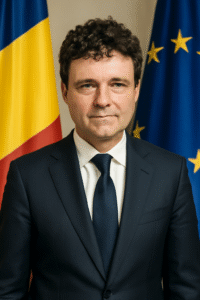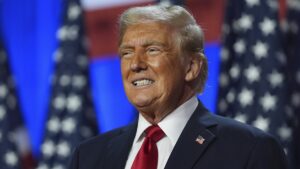In a development that has captured global attention, President Donald Trump has announced that the United States and Iran have reached a “sort of” agreement on the terms of a new nuclear deal. This agreement, which has yet to be fully finalized, marks a significant step in efforts to reduce tensions between the two nations, who have long been at odds over Iran’s nuclear program.
A Glimpse Into the Deal
The proposed deal would see Iran halting its uranium enrichment activities for up to three years, a significant concession given the critical role of uranium enrichment in nuclear weapons development. In exchange, the United States would agree to lift many of the harsh economic sanctions that have crippled Iran’s economy for years. These sanctions, which target key sectors such as Iran’s oil exports and its financial systems, have placed immense pressure on the Iranian population.
Under the terms of the preliminary agreement, international inspectors would be allowed to monitor Iran’s nuclear facilities to ensure compliance with the terms of the deal. These inspections are crucial in providing the international community with assurances that Iran is not moving forward with its nuclear weapons program.

Challenges Remain
Despite the optimistic tone of the announcement, significant challenges remain. One of the primary sticking points is the timeline for uranium enrichment. While the deal would freeze Iran’s uranium enrichment for a period of up to three years, critics argue that this is only a temporary solution and may not address long-term concerns. After three years, Iran could potentially resume its nuclear activities, which could reignite the very tensions that the deal aims to ease.
Moreover, the deal does not address concerns over the possibility of the U.S. unilaterally withdrawing from the agreement in the future, as it did with the 2015 Joint Comprehensive Plan of Action (JCPOA). When President Trump pulled out of the JCPOA in 2018, it led to a breakdown in trust between the two nations, and this remains a significant issue in the new negotiations. Iran has called for guarantees that the U.S. will not back out of the deal again, but no clear solution has yet been proposed.
International Reactions
The international community has largely welcomed the news of a renewed agreement between the U.S. and Iran. Leaders across Europe, particularly those from countries involved in the 2015 JCPOA negotiations, have expressed support for the new deal and encouraged both sides to prioritize diplomacy.
The European Union has emphasized the importance of a robust verification mechanism to ensure that Iran’s nuclear program remains peaceful. Many analysts believe that this agreement could serve as a foundation for a more comprehensive and lasting resolution to the issue of Iran’s nuclear ambitions.
However, not everyone shares the same optimism. Israel, a close ally of the U.S. in the Middle East, has expressed concerns about the deal, fearing that it could still allow Iran to retain the infrastructure necessary for nuclear weapons development. Israeli officials have warned that any agreement that allows Iran to maintain its nuclear capabilities, even under the supervision of international inspectors, could pose a security threat to the region.
Additionally, countries like Saudi Arabia and the United Arab Emirates, who view Iran as a regional rival, have raised concerns about the potential lifting of sanctions. They fear that Iran, with its sanctions relief, could gain more resources to support its activities in countries like Syria, Iraq, and Yemen, where it backs various proxy groups.
Looking Ahead
While the announcement of a “sort of” agreement between the United States and Iran is a significant diplomatic milestone, the journey ahead is far from straightforward. Many questions remain unanswered, particularly regarding the specifics of uranium reduction, the guarantees against future U.S. withdrawal, and the scope of inspections.
The U.S. and Iran will need to engage in further negotiations to iron out these details and ensure that both sides are satisfied with the terms. Domestic politics in both countries will also play a crucial role in the outcome of these talks. In the U.S., President Trump faces pressure from lawmakers who are skeptical of engaging with Iran, while in Iran, hardline factions could oppose any deal that is perceived as a concession to the West.
Despite these challenges, the fact that both nations are willing to engage in dialogue again is a positive sign. It reflects a shift in the diplomatic landscape and offers hope for a peaceful resolution to one of the most pressing issues in global security.

Conclusion
The disclosure of a partially agreed-upon deal between the U.S and Iran on a new nuclear deal is a promising development in the ongoing efforts to resolve one of the most complex and volatile international issues of our time. While the deal is still far from complete, it represents a significant shift in the diplomatic landscape and offers hope for a more peaceful future in the Middle East.
However, many obstacles remain, and the final outcome of the negotiations will depend on how both sides navigate the technical and political challenges that lie ahead. Ultimately, the success of the deal will not only depend on the terms of the agreement itself but also on the broader geopolitical dynamics in the region and the commitment of both the U.S. and Iran to make the deal work.
With global attention fixed, the stakes have never been greater. A successful agreement would not only prevent Iran from acquiring nuclear weapons but could also open the door to a new era of cooperation and stability in the Middle East. However, the path to peace is never straightforward, and the coming months will be critical in determining whether this fragile breakthrough can be transformed into a lasting and meaningful resolution.





